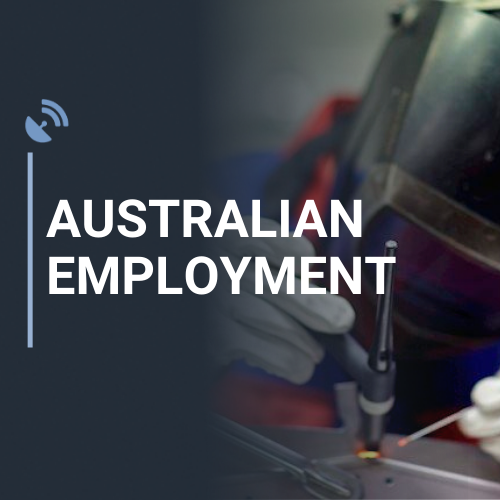- The Australian Unemployment Rate is foreseen unchanged at 4.2% in August.
- Employment Change is expected at 25K, more than halving the 58.2K posted in July.
- AUD/USD stands below 0.6800, with a bullish bias in the Federal Reserve’s aftermath.
The Australian Bureau of Statistics (ABS) will release the monthly employment report at 1:30 GMT on Thursday. The country is expected to have added 25K new positions in August, while the Unemployment Rate is foreseen to remain steady at 4.2%. The Australian Dollar (AUD) heads into the event with a firmer tone against its United States (US) rival, with AUD/USD hovering around the 06770 level.
The ABS reports Employment Change separating full-time from part-time positions. According to its own definitions, full-time jobs imply working 38 hours per week or more and usually include additional benefits, but they mostly represent consistent income. On the other hand, part-time employment generally means higher hourly rates but lacks consistency and benefits. That’s why full-time jobs have more weight than part-time ones when setting an AUD directional path.
Back in July, the monthly employment report showed that Australia managed to create 60.5K full-time jobs while losing 2.3K part-time positions, resulting in a net Employment Change of 58.2K. The Unemployment Rate, in the meantime, rose to 4.2% from 4.1% prior.
Australian Unemployment Rate seen stable, but high in August
As previously noted, financial markets anticipate the Unemployment Rate to be at 4.2%, unchanged on a monthly basis. Job creation is expected to continue, albeit at a slower pace.
The Australian Unemployment rate jumped to 4.2% in July, which seems good news from the Reserve Bank of Australia (RBA) as it’s a sign of a loosening labor market, which eventually will back up an interest rate cut.
The RBA has maintained the Official Cash Rate (OCR) at 4.35% since lifting it to such a level in November 2023, being among those central banks that show no interest in trimming interest rates.
And there is a good reason: The Australian inflation rate rose to 3.8% year-on-year (YoY) in the second quarter of the year, matching expectations yet higher than the 3.6% posted in Q1. It was the first acceleration in the annual Consumer Price Index (CPI) since 2022 amid higher inflation for both goods and services.
Indeed, growth remains sluggish in the country. According to the latest Gross Domestic Product (GDP) release, the economy grew a modest 1% YoY in the second quarter of the year. Taking the 2023-24 financial year as a whole, the economy expanded 1.5%, the weakest since the 1991-92 year, excluding the 0.3% contraction during the pandemic-disrupted year, the ABS stated.
Finally, it is worth noting that RBA Governor Michele Bullock said that market expectations for an interest rate cut “don’t align” with the Board’s thinking. Even further, Bullock noted she is doing her job, which is to tame inflation, suggesting policymakers are not putting economic performance above their mandate.
“If the economy evolves broadly as anticipated, the Board does not expect that it will be in a position to cut rates in the near term,” Bullock added.
When will the Australian employment report be released, and how could it affect AUD/USD?
The ABS will publish the August employment report early on Thursday. As previously stated, Australia is expected to have added 25K new job positions in the month, while the Unemployment Rate is foreseen at 4.2%. Finally, the Participation Rate is expected to hold at 67.1%.
The AUD/USD pair trades near the 0.6800 price zone ahead of the event and following the Federal Reserve’s (Fed) monetary policy decision. The US central bank went for an aggressive 50 basis points (bps) interest rate cut, with the overall decision being more dovish than anticipated. Financial markets welcomed the news and sold the Greenback, while stock markets rose, underpinning AUD/USD.
After the dust settled, stocks trimmed Fed-inspired gains and helped the US Dollar to recover against its major rivals. From a technical perspective, Valeria Bednarik, Chief Analyst at FXStreet, notes: “The AUD/USD pair is bullish and trades near its recent highs at 0.6823. The pair can reach the level on a better-than-anticipated August employment report. December high at 0.6870 is the next level to watch and a potential bullish target, although the figures really have to rock markets to spur such a rally.”
Bednarik adds: “AUD/USD will likely trade on mood. DIscouraging employment figures may have a negative effect on the AUD/USD pair. Support can be found in the 0.6740 region ahead of the 0.6700 threshold.”
Economic Indicator
Full-Time Employment
Full-Time Employment, released by Australian Bureau of Statistics, is the total number of people above a specified age, who in a short reference period, were in paid employment or self-employment. Paid employment includes people who had a job during the reference period but were temporarily absent from work.
Economic Indicator
Part-Time Employment
Part-Time Employment, released by Australian Bureau of Statistics, is the total number of people above a specified age, who in a short reference period, were in part-time paid employment or self-employment. Paid employment includes people who had a job during the reference period but were temporarily absent from work.
